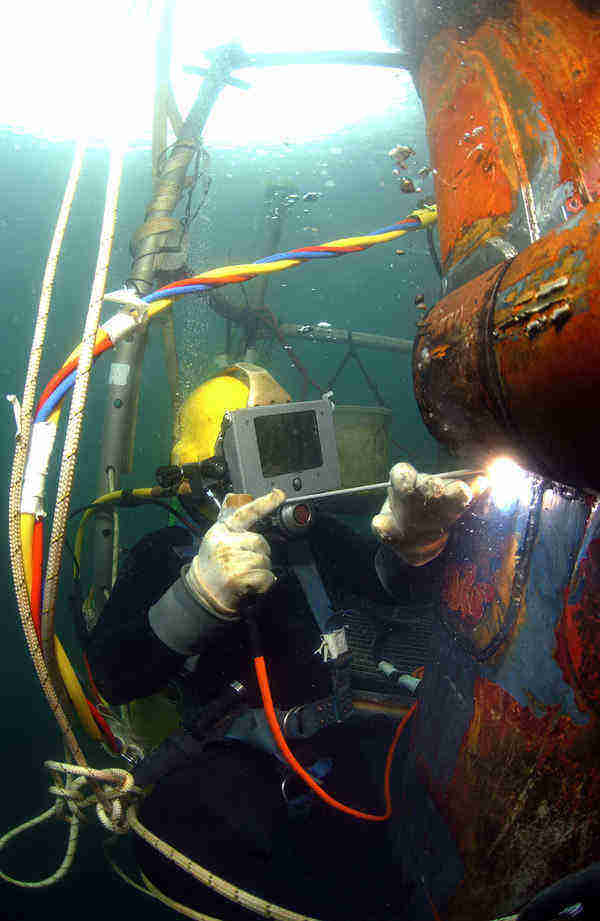Underwater Welding

Underwater welding has long been a necessity for a variety of projects. While most people picture welders surrounded by deep water when they hear underwater welding, this situation only describes one type of water welding called wet welding. The other type, dry welding, involves the welder being insulated from the water and working inside a dry or semi-dry environment. Here, we’ll discuss the basics of both methods so you’re better informed for your next watery welding adventure.
Wet Welding
Wet welding usually costs less than dry welding, but it is also more dangerous. This could be one of the reasons it isn’t used very often. Wet welders perform underwater welds the same way they would on dry land. Similar equipment and techniques are required, so many welders transition from dry to wet welds.
The challenges wet welders face are many. A few of these problems they face include steaming, arc constriction, and electrode diameter. Additionally, deposition rate and bubbling hurt the strength of welds exposed to the surrounding water.
Common Wet Welding Techniques
- Flux-Cored Arc Welding (FCAW). In this technique, welders use a spool that provides continuous filler metal for applications on nickel-based alloys, cast iron, and similar metal types.
- Friction Welding (FW). Welders fuse together metal using high friction and heat without material melting. This technique is usually used for metal and thermoplastic applications.
- Shielded Metal Arc Welding (SMAW). Welders use a long, thin electrode and an electrical arc for stainless steel, aluminum, and other metal applications.
Dry Welding
Compared to wet welding, dry welding is costlier, but it is also safer for personnel involved. There are four common types of dry welding:
- Pressure welding is when welders work in a pressure vessel of the same pressure as sea level.
- Habitat welding uses a chamber that is the same pressure as the surrounding pressure at working depth. This small chamber displaces water into the surrounding body of water.
- Dry chamber welding is similar to habitat welding, but uses a smaller chamber that only holds the welder diver’s head and shoulders.
- Dry spot welding is an even smaller chamber that only holds the welder’s head. The chamber is put onto the weld site, and the welder inserts an electrode inside of this habitat.
Common Dry Welding Techniques
- Plasma Arc Welding (PAW). Welders use a constricted electric arc that works similarly to water in a hose. This technique used for aluminum and stainless steels allows for high arc speed and high heat.
- Gas Metal Arc Welding (GMAW). In this process, welders use a shielding gas through the welding gun and around the electrode. GMAW is typically used for aluminum and nonferrous material applications.
- Gas Tungsten Arc Welding (GTAW). Welders use an electrode made of non-consumable tungsten in this process. Used for stainless steel and aluminum applications, heat is applied with an electric arc.
- Flux-Cored Arc Welding (FCAW) and Shielded Metal Arc Welding (SMAW). These are the same welding techniques used in wet welding and defined above.
The decision to choose wet or dry welding requires thought and consideration. If you’re looking for assistance on which type of welding you should choose, Streamline Industries can help. Our team of skilled welders provides you the workmanship and detail you’ve come to expect. Our specialty welding system gives us the ability to overlay specialty items with Inconel or carbon steel, brass, or stainless steel, and we can create new manufacturing and repair applications.
